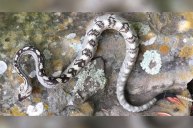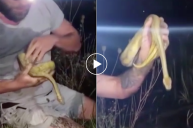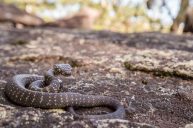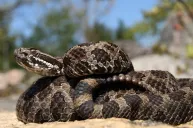A hungry snake became a part of a spooky spectacle on Saturday in Miami Shores when the Florida black racer snake became entangled in a Halloween display of a decorative spider web.
A local resident came across the ominous sight, and with concern for the snake's well-being, reached out for help to the Pelican Harbor Seabird Station (PHSS).
Wildlife rescue coordinator George Escobar came to the serpent's rescue. He unwound the little guy from his entanglement in the decorative web, which revealed another surprise: inside the black racer snake's mouth was half of a small lizard.
A spokesperson for PHSS, Hannah McDougall, shared that it was unknown if the lizard had died before the snake caught him or in the midst of being eaten whole.
The theories are either that the snake chased the lizard into the web where they then both got caught, or the lizard was already caught in the web and the snake pursued what seemed like it might be an easy meal before becoming entangled.
https://www.instagram.com/p/CzB9rVWLmFp/?utm_source=ig_embed&utm_campaign=loading
The unlucky snake was kept overnight for observation after his traumatic entangling, and then released back to the same neighborhood the following day.
According to the National Park Service, Florida black racers are found throughout Florida and can grow up to 60 inches long. They are known for being fast (hence the "racer" part of their name), and though they are nonvenomous, they resemble a more dangerous snake: the venomous water moccasin. As a result they are unfortunately often killed out of fear, and human development is another threat. Though fast, they can't outrun cars, and human installations like Halloween decorations can obviously have an impact on their environment.
This is sadly not an uncommon occurrence this time of year; Yaritza Acosta, a wildlife rehabilitation manager, shared this happened to a bird as well. "While festive and seemingly innocuous," warns Hannah McDougall of PHSS, "decorations like fake spiderwebs can unintentionally threaten local wildlife."
While we all appreciate good Halloween decorations, it is important to be mindful of where we're putting them, the impact they can have, and the resources to reach out to if you do happen to find a creature looking for a holiday treat.
READ MORE: Wild Photos Show One Python Eating Another




